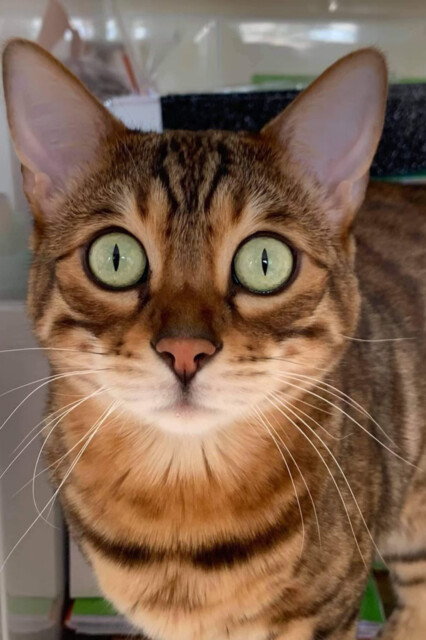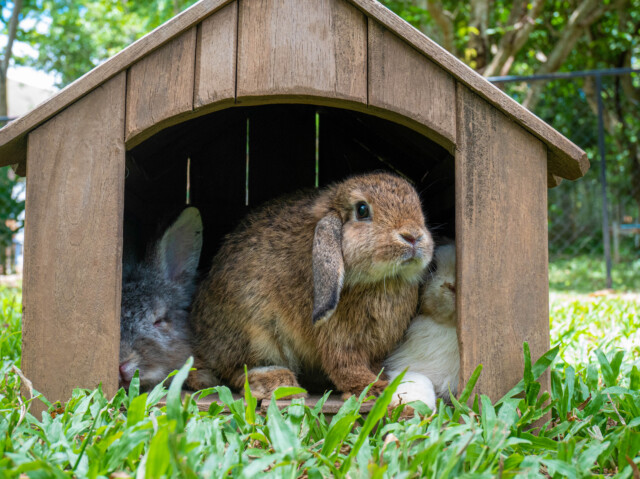HE is a vet on a mission to help our pets . . . and he is here to answer YOUR questions.
Sean, who is the head vet at the tailored pet food firm tails.com, has helped with owners’ queries for ten years. He says: “If your pet is acting funny or is under the weather, or you want to know about nutrition or exercise, just ask. I can help keep pets happy and healthy.”
Sean helps a reader with a bunny
 Sean McCormack, head vet at tails.com, promises he can ‘help keep pets happy and healthy’
Sean McCormack, head vet at tails.com, promises he can ‘help keep pets happy and healthy’
Q) MY rabbits Fluff and Bob have been suffering in the heat and humidity these past months.
We have the hutch and run in a shady spot and we always give plenty of cold water
Do you have any other suggestions to help them keep cool?
Jane Manning, Brighton
A) You’re doing everything right with shade and plenty of cold water.
You could also let them access an indoor tiled area, so they can lie on a cool surface.
A fan in front of a bowl of iced water is great on really hot days, but guard the wire so Fluff and Bob can’t chew it.
You can get cooling mats for pets to lie on, but a towel fresh from the freezer is also enjoyed by most pets when they are hot and bothered. Stay cool, buns!
Q) IS our gerbil Pete unhappy?
We have him out to play and he likes being handled by the kids.
But when he’s back in his cage he seems a bit down.
What can we do to cheer him up?
John Peterson and family, Norwich
A) Gerbils are kind of like the goths or emos of the rodent world, sitting in a corner, droopy faced and looking a bit forlorn. But they’re just “in their feelings, man”.
I jest of course. There is a serious side to this in that gerbils are highly social animals, so it’s not recommended you keep them on their own.
It would be great to pair Pete up with another gerbil.
But being an adult male, he may fight with another male.
And we all know what happens when a boy gerbil loves a girl gerbil very much, so a female may not be a good option if you don’t want to be overrun with babies.
There is one solution, which is neutering Pete and getting him a girlfriend. Family planning is key.
Q) MY one-year-old corn snake Magic, is off her food.
I always make sure her mice are totally defrosted. Any suggestions?
Emma Parkinson, Melton Mowbray
A) A reptile dysfunction is always worrying. But I need more information about Magic’s housing.
The most common reasons for reptiles to stop eating are to do with environmental conditions.
Temperature, humidity, space and security are all crucial.
They need enough room to thermoregulate, or move around to cooler and warmer areas to control their internal temperature — raising it by basking, and cooling it by retreating to the cooler end of the enclosure.
This is called a thermal gradient, and many of the little tanks and plastic boxes often recommended for snake housing just aren’t big enough to allow an appropriate gradient from warm to cool. So cage design is crucial.
After that, ensure you provide the right temperatures using a basking light and heat mat, both on thermostats so you know the temperature is controlled accurately. Overheating is as harmful as underheating.
Humidity is key too. Each reptile species has its own exact preferences.
Finally, plenty of places to hide are important, especially for young snakes.
 Sean helps a reader with an unhappy gerbil
Sean helps a reader with an unhappy gerbil
Q) MOLLY, my five-year-old cat, has been sneezing a lot.
Can cats suffer from hayfever? She’s eating and drinking OK.
Chris Beardon, West Kingsdown, Kent
A) Yes, they can. It’s an allergic reaction to pollen causing similar symptoms to when we suffer from it:
Sneezing, runny eyes and irritation. In dogs, on the other hand, it mainly gives them itchy skin.
Brachycephalic or flat-faced breeds of cat like Persians, Shorthairs and Himalayans may even suffer serious breathing difficulties with hayfever due to their compressed airways and shortened skulls that we have bred into them just for a cute look.
It’s great that Molly is eating and drinking OK, but I would have her checked by your vet.
If there is any green or yellow discharge from the nose, there could be an infection or something stuck up there.
Star of the week
BENGAL cat Frank is confused about his identity – as he thinks he’s a dog.
The six-year-old loves going for walkies, can sit and fetch and will even try to rip up the post like a naughty pup.
 Bengal cat Frank is confused about his identity – as he thinks he’s a dog
Bengal cat Frank is confused about his identity – as he thinks he’s a dog
Owner Karen Harris, 58, of Sudbury, Suffolk, said: “Frank has definitely got some kind of identity crisis.
“He can sit and spin on command, he fetches and retrieves everything from hair bands to socks, he can open doors.
“The only thing he doesn’t do is bark.
“If the post comes, he’ll try to rip it to shreds like a puppy. Life is definitely never dull with him around.
“We even tell him when he’s been a naughty boy – not that he cares, his only cat trait.”
Is your dog anxious home alone?
MORE than ten million dogs in the UK are struggling to cope when left home alone, experts warn in the run-up to Separation Anxiety Awareness Day.
Animal welfare charity the RSPCA says eight in ten dogs feel stressed when left, meaning 10.8million of the nation’s 13.5million dogs are affected
 Jo Sellers said: ‘When Reba was a puppy I really struggled. I had no idea that dogs could panic when being home alone’
Jo Sellers said: ‘When Reba was a puppy I really struggled. I had no idea that dogs could panic when being home alone’
Dog trainer Jo Sellers, of Guildford, Surrey, became a separation anxiety specialist after her own dog Reba suffered when left even for only very short periods.
Jo, 52, says: “When Reba was a puppy I really struggled. I had no idea that dogs could panic when being home alone. I had terrible advice from a trainer who told me to keep her in her crate, don’t return to her when she barks and leave her to cry it out.
“After finding a kind way of helping Reba, I was inspired to become a dog trainer.”
To mark Separation Anxiety Awareness Day, on September 30, former firefighter Jo says owners should find out whether their pup is suffering.
Buy a pet cam for around £20 online, which synchs with your smartphone.
Or set up a Zoom call with your phone and a laptop to see what your pet is doing when you are not there.
Move away from the room and observe your dog’s body language.
Anxiety indicators include lip-licking, yawning, pacing, barking, crying, howling, scratching at the door, running around or toileting.
If they’re happy alone, they’ll lie on their side, snooze and relax.
For more tips see: pippinpetsdogtraining.co.uk/dog-separation-anxiety-awareness-day.








